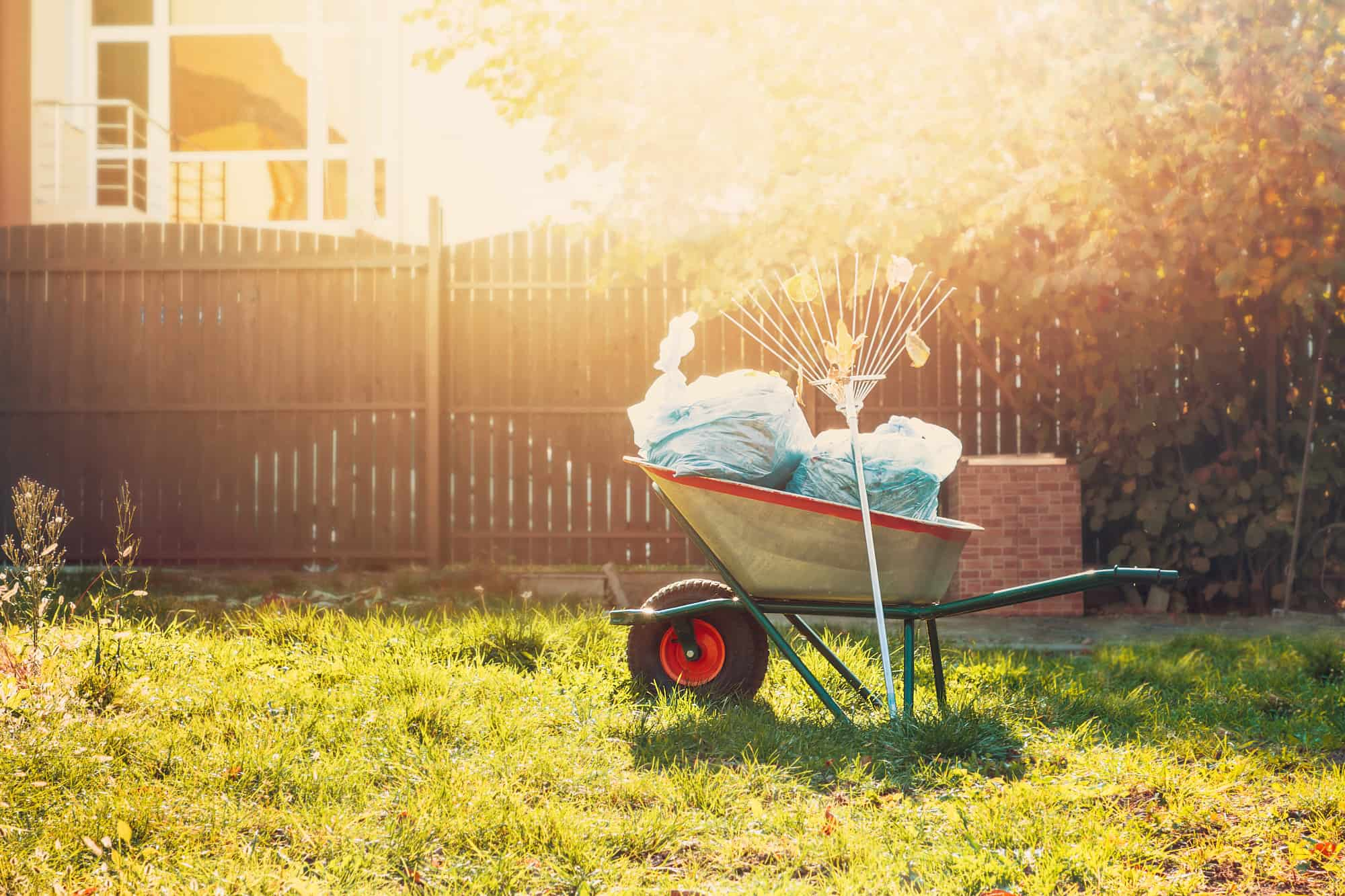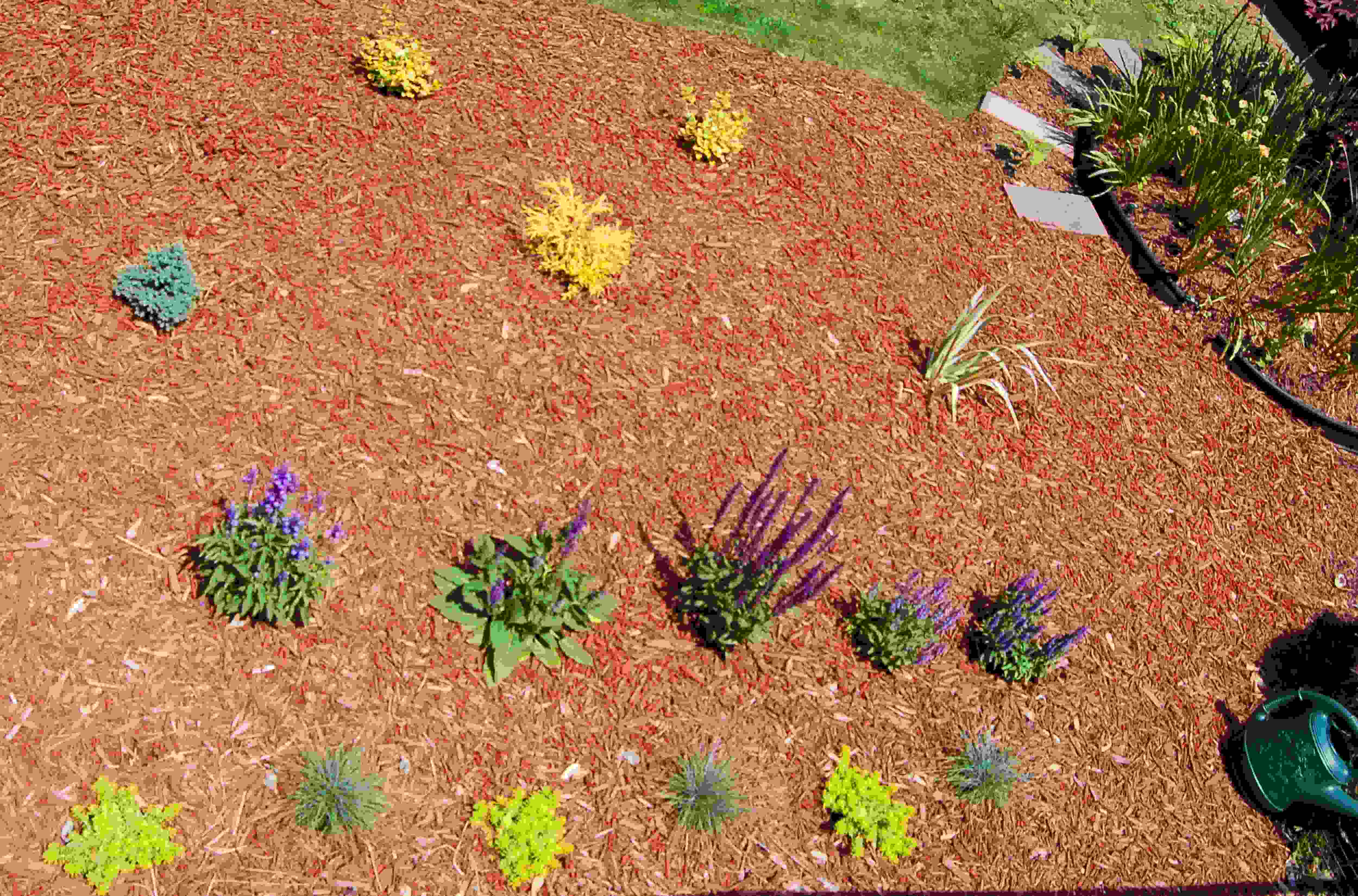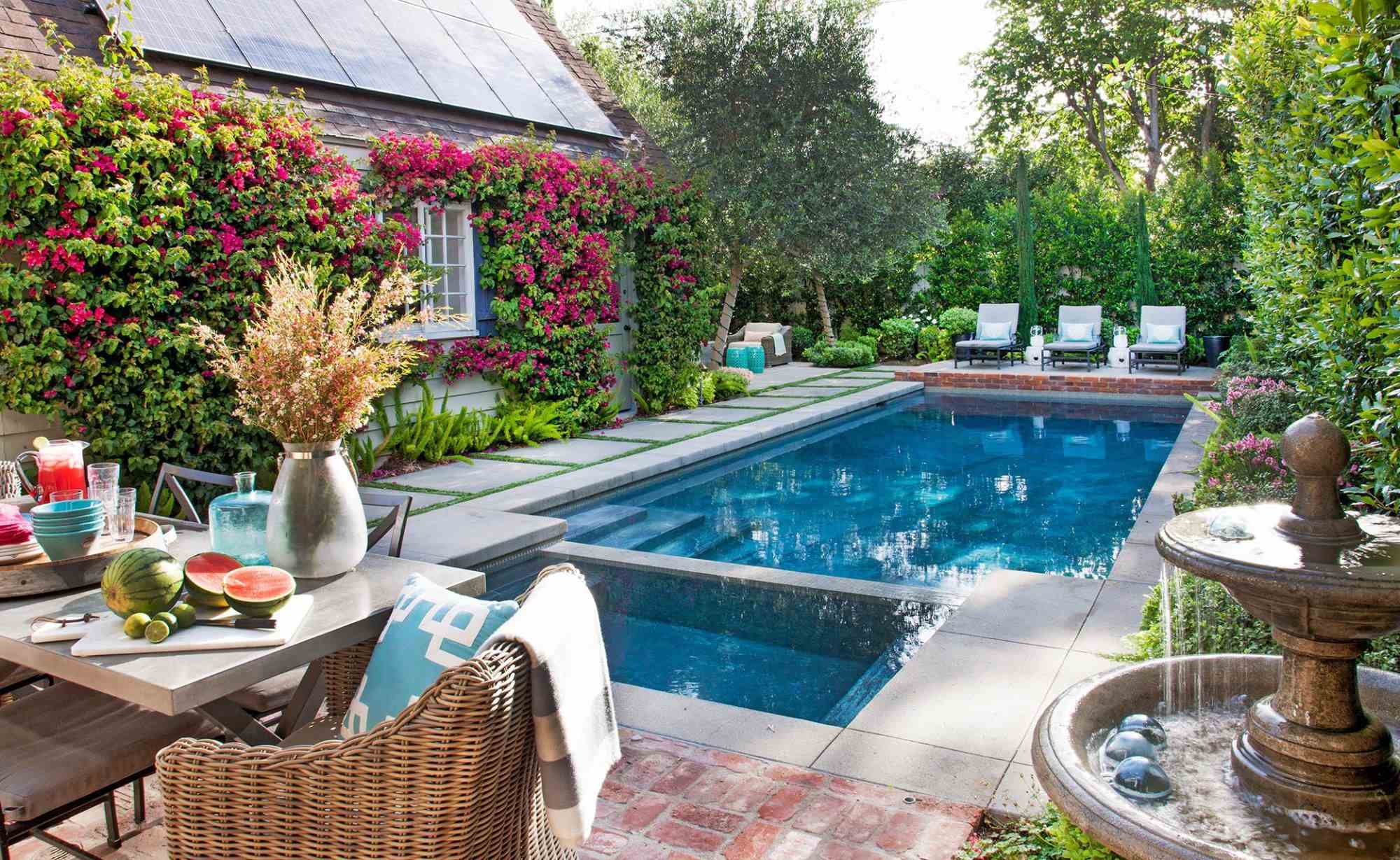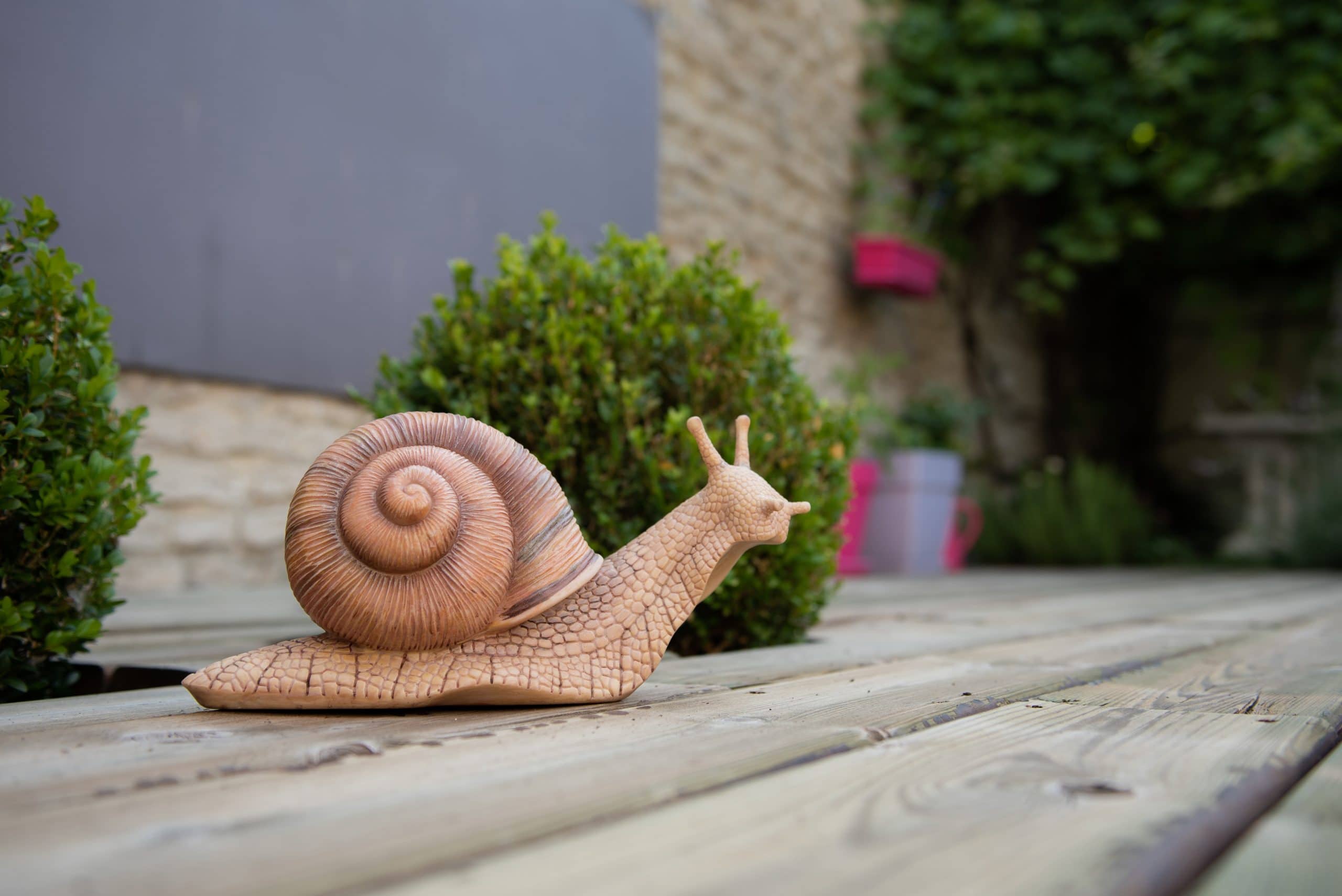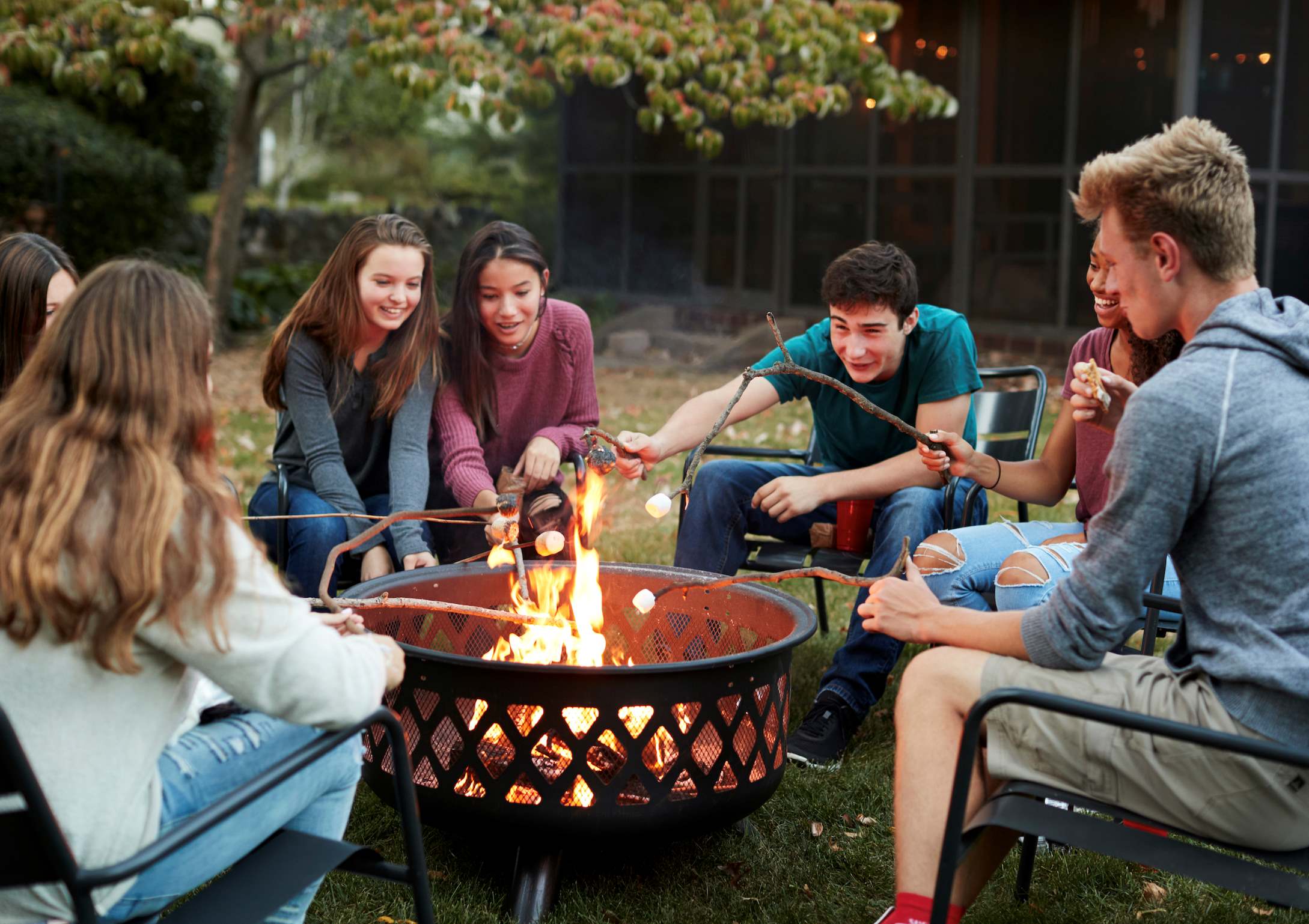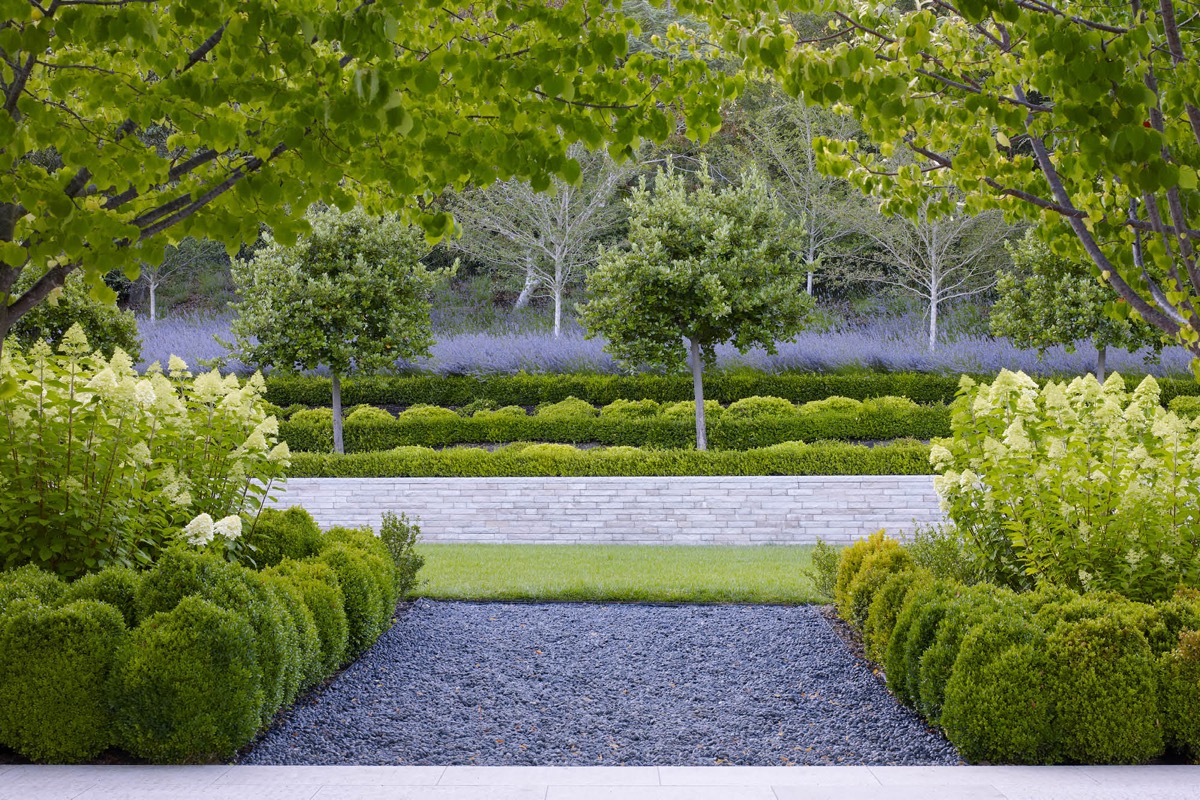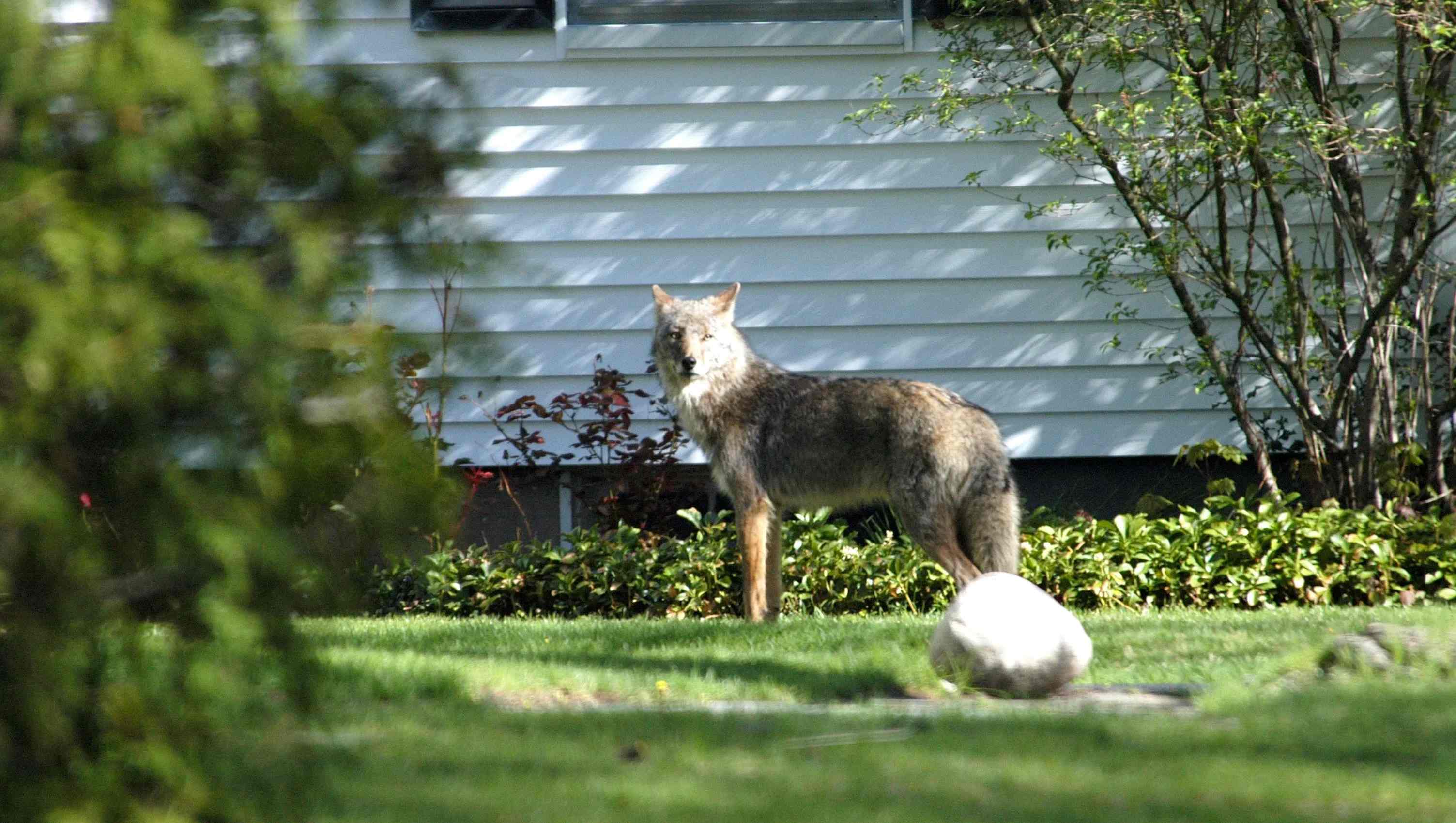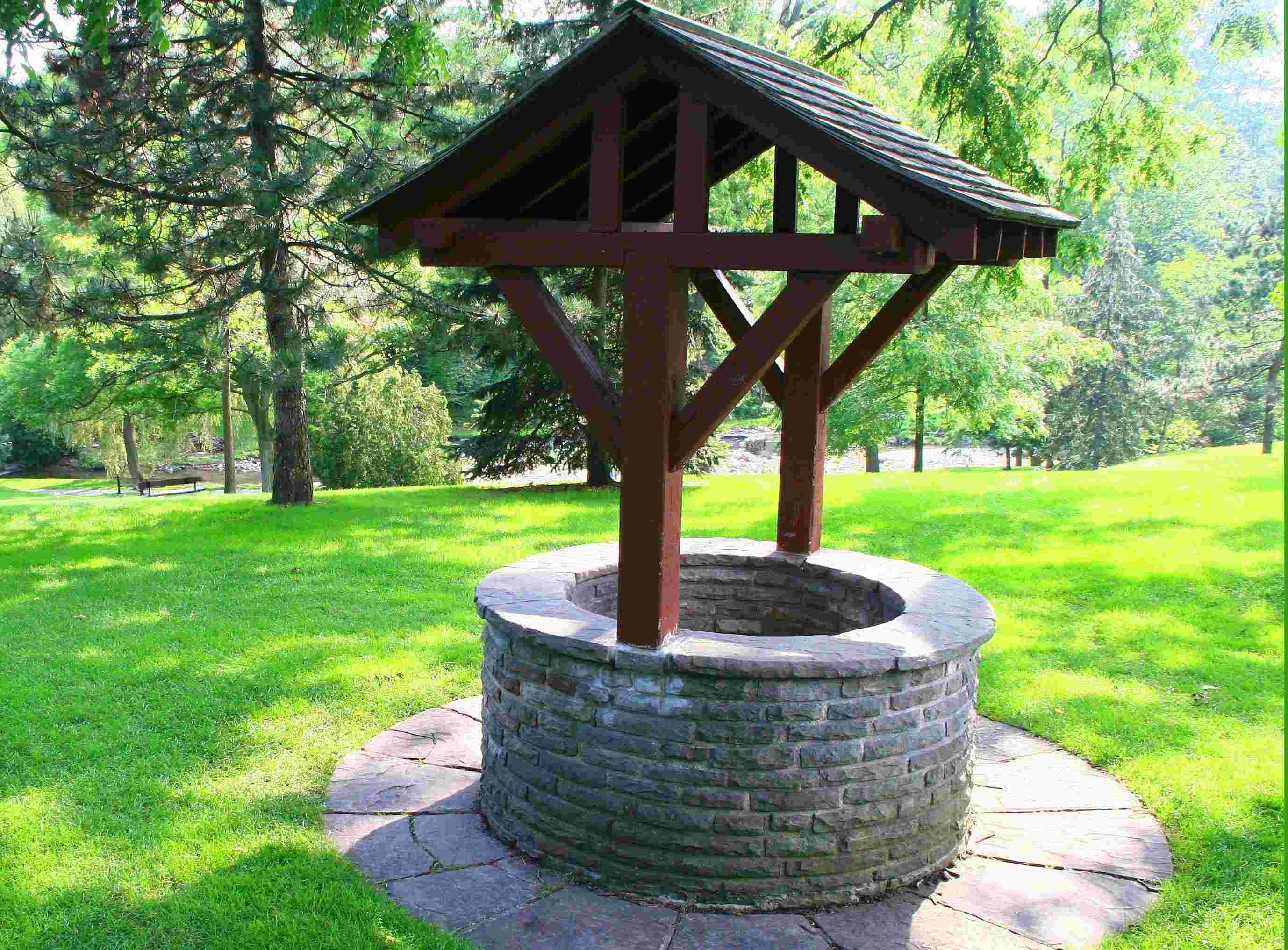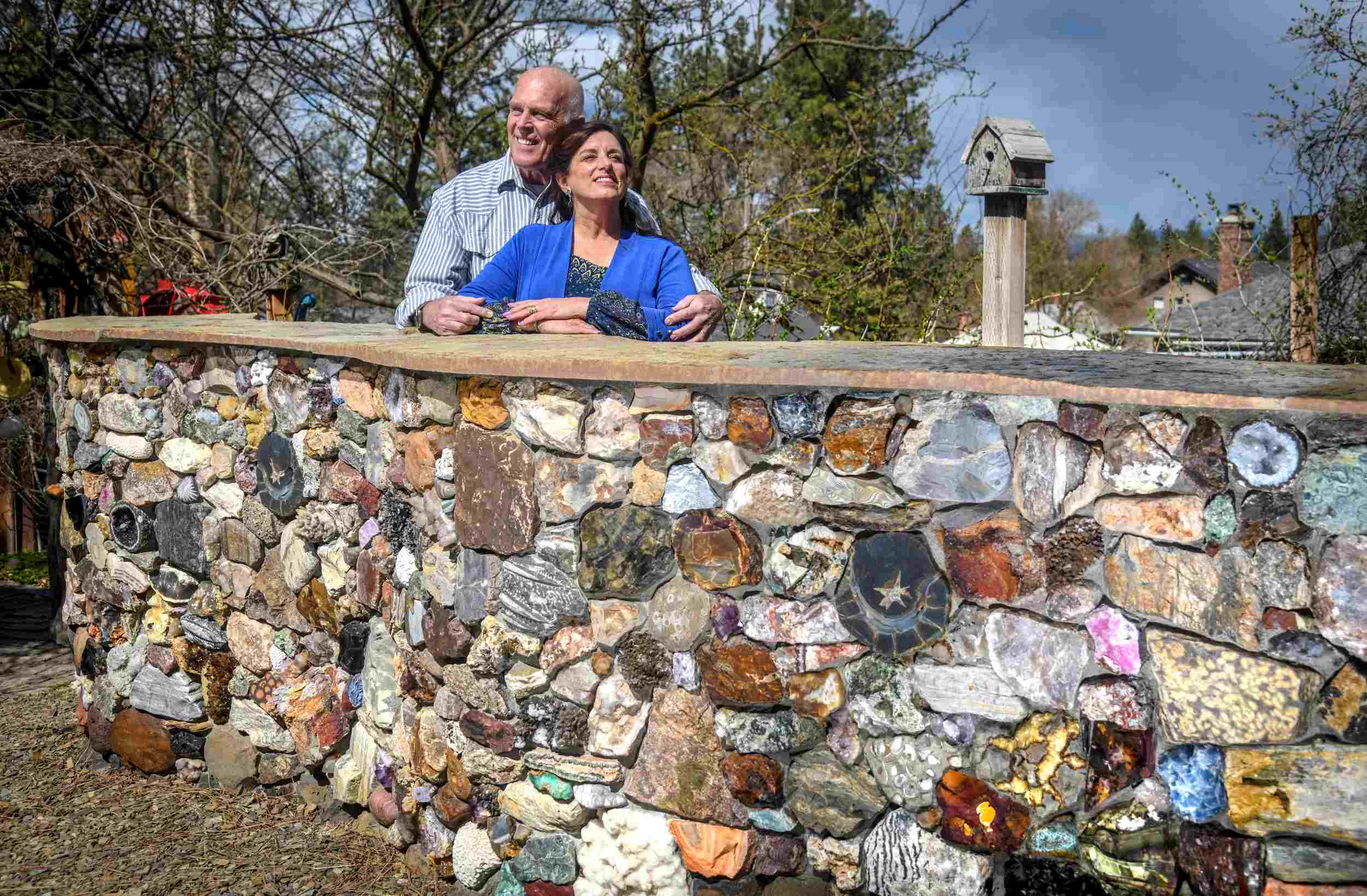Home>Garden Design>How To Design Your Backyard Landscape


Garden Design
How To Design Your Backyard Landscape
Modified: January 22, 2024
Learn how to design your backyard landscape with expert tips and ideas. Create a stunning outdoor space with our easy-to-follow landscape design techniques.
(Many of the links in this article redirect to a specific reviewed product. Your purchase of these products through affiliate links helps to generate commission for Chicagolandgardening.com, at no extra cost. Learn more)
Table of Contents
Introduction
Welcome to the world of backyard landscapes! Whether you have a small yard or a sprawling garden, designing your outdoor space can be an exciting and fulfilling project. A well-designed landscape not only increases the aesthetic appeal of your home but also creates a tranquil and inviting atmosphere for you and your loved ones to enjoy.
Designing a backyard landscape can seem overwhelming at first, but with careful planning and a few key considerations, you can transform your outdoor space into a personal oasis. In this article, we will guide you through the steps of creating a stunning landscape that reflects your style and meets your unique needs.
As you embark on this design journey, it’s essential to assess your backyard space. Take the time to understand its dimensions, topography, and any existing features such as trees, fences, or structures. This initial assessment will help you make informed decisions as you plan your landscape.
Next, define your goals and needs for the space. Are you looking to create a peaceful retreat, a vibrant garden, or a space for entertaining? Consider your lifestyle, hobbies, and preferences to ensure that your backyard serves its desired purpose. The design should complement your lifestyle and provide the functionality you require.
Choosing a theme or style for your backyard landscape can bring cohesiveness and visual appeal to the space. Whether you prefer a modern and minimalist look or a rustic and natural feel, selecting a theme will guide your design decisions. This step will help you create a harmonious outdoor environment that reflects your personal taste.
Once you have a clear vision in mind, it’s time to create a layout plan for your backyard. Sketch out different ideas, taking into account zoning areas for plants, hardscape elements, and outdoor living spaces. Consider the flow and balance of the design, ensuring that each component complements the overall composition.
As you move forward with your landscape design, selecting the right plants and flowers is crucial. Consider factors such as climate, sunlight, soil conditions, and maintenance requirements. Choose a combination of plants that add color, texture, and variety to your backyard, creating a visually pleasing and sustainable landscape.
Hardscape elements such as pathways, patios, and retaining walls can add structure and functionality to your backyard. Select materials that complement your chosen theme and ensure durability. Thoughtful placement of hardscape elements can create focal points and define specific areas within your landscape.
To elevate the aesthetics and tranquility of your backyard, consider incorporating water features such as fountains, ponds, or waterfalls. The soothing sound of flowing water can create a peaceful ambiance and attract birds and other wildlife to your garden. Ensure you integrate these features seamlessly into your overall design.
Creating outdoor living spaces is an excellent way to expand your home’s square footage and encourage outdoor gatherings. Whether it’s a cozy seating area, a dining space, or a fire pit, these designated spots invite relaxation and entertainment. Pay attention to the placement of these areas to maximize privacy and utilize natural elements for shade and comfort.
Don’t forget about lighting! Proper outdoor lighting enhances the safety and beauty of your backyard landscape, allowing you to enjoy the space during the evening hours. Consider a combination of ambient, task, and accent lighting to highlight key features and create the desired atmosphere.
Finally, keep in mind the maintenance and upkeep required for your backyard landscape. Choose plants and materials that are easy to maintain and require minimal effort. Regular pruning, watering, and cleaning will ensure that your landscape remains vibrant and inviting throughout the seasons.
Now that you have a comprehensive understanding of the key steps involved in designing your backyard landscape, it’s time to get started! With careful planning and a creative vision, you can transform your outdoor space into a beautiful retreat that reflects your style and enhances your quality of life.
Assessing your backyard space
Before diving into the design process, it’s important to assess your backyard space and understand its unique characteristics. This initial step will provide valuable insights that will guide your landscape planning.
Start by measuring the dimensions of your backyard, including the length, width, and any irregular shapes or areas. This information will help you determine the available space for different elements of your landscape design, such as planting beds, hardscape features, and outdoor living areas.
Take note of any existing features that may impact your design, such as trees, fences, or utility structures. These elements can provide valuable opportunities or constraints when it comes to planning your landscape layout.
Observing the topography of your backyard is also essential. Note any slopes, hills, or natural contours that can influence drainage and the flow of water. Understanding the topographic features will aid in the selection and placement of plants, as well as the incorporation of hardscape elements.
Consider the amount of sunlight your backyard receives throughout the day. Note any areas that are heavily shaded or receive direct sunlight. This information will help you choose plants that thrive in specific light conditions and determine suitable locations for outdoor living spaces.
Another aspect to evaluate is the soil quality and composition of your backyard. Different plants have different soil requirements, so understanding the soil type will be crucial in selecting the appropriate plants for your landscape. You may need to amend the soil or create raised beds or containers if the soil is not ideal for your chosen plants.
Lastly, take into account the privacy and views from your backyard. Determine whether you need to create more privacy by adding screens, fences, or strategic planting. Consider the views from different areas of your backyard and how they can be enhanced or obstructed with your landscape design.
By thoroughly assessing your backyard space, you will have a solid foundation for your landscape design decisions. Take the time to gather all the necessary information and make note of any unique features or challenges. This will ensure that your design is tailored to your specific backyard and that you maximize the potential of the space.
Defining your goals and needs
When it comes to designing your backyard landscape, it’s important to define your goals and needs for the space. This step will ensure that your design aligns with your personal preferences and lifestyle, creating a backyard that is both functional and enjoyable.
Start by considering how you envision using your backyard. Do you want a serene and peaceful retreat where you can relax and unwind? Or are you more interested in creating an outdoor entertaining area where you can host gatherings with friends and family?
Think about your hobbies and interests. If you enjoy gardening, you may want to incorporate flower beds and vegetable gardens into your landscape design. If you have children or pets, creating a safe and engaging space for them to play may be a top priority.
Consider the seasons and how you want your backyard to look and function year-round. Do you want a burst of color in the spring and summer with vibrant flowering plants? Or do you prefer evergreen plants that provide year-round greenery?
Think about the level of maintenance you are willing to commit to. If you have a busy lifestyle and limited time for yard work, choosing low-maintenance plants and materials will be important. On the other hand, if you enjoy spending time in the garden and don’t mind regular maintenance, you can opt for more high-maintenance elements.
Take into account the specific needs of your household. If you have elderly family members, consider incorporating accessibility features such as ramps or raised beds. If you love to cook and entertain, you may want to include an outdoor kitchen or barbecue area.
Consider any specific challenges or constraints you may have. For example, if you have a small backyard, you will need to optimize the space and choose plants and features that are suitable for smaller areas. If you live in an area with water restrictions, selecting drought-tolerant plants and implementing water-saving techniques will be important.
By defining your goals and needs, you will have a clear vision of what you want to achieve with your backyard landscape. This will help guide your design decisions and ensure that your outdoor space is tailored to your lifestyle and preferences. Take the time to reflect on your goals and needs before moving on to the next steps in the design process.
Choosing a theme or style
Once you have assessed your backyard space and defined your goals and needs, it’s time to choose a theme or style for your landscape design. Selecting a theme will bring cohesiveness and visual appeal to your outdoor space, creating a harmonious environment that reflects your personal taste.
Start by considering your preferences when it comes to aesthetics. Do you gravitate towards a modern, minimalist style with clean lines and sleek features? Or do you prefer a more rustic, natural look with organic shapes and materials? Take inspiration from interior design styles that you love and see how they can be translated into your outdoor space.
Think about the architecture and design of your home. You may want to create a landscape that complements the existing style of your house, whether it’s traditional, contemporary, or something in between. Choosing a theme that harmonizes with the architecture will create a seamless transition between indoor and outdoor spaces.
Consider the surrounding environment and climate. If you live in a coastal area, a beach-inspired theme with coastal plants and decor may be fitting. If you reside in a mountainous region, a natural and woodland-inspired theme can blend seamlessly with the landscape. Let the natural elements and surroundings influence your design choices.
Research different garden styles that resonate with you. From formal and symmetrical French gardens to wild and free-spirited cottage gardens, there are countless themes to choose from. Explore various themes through magazines, websites, or even visiting local gardens to gain inspiration and find the style that speaks to you.
Don’t be afraid to mix and match elements from different styles to create a unique and personalized look. You can incorporate Asian-inspired elements like bamboo screens or Zen gardens into a contemporary design, or blend Mediterranean flair with a tropical paradise. The key is to find a balance that captures your vision and creates a cohesive atmosphere.
Consider the mood and atmosphere you want to create in your backyard. Do you want a serene and tranquil space that promotes relaxation and mindfulness? Or do you prefer a vibrant and energetic environment that invites socializing and entertainment? Think about how different styles can evoke specific emotions and cater to your desired ambiance.
Ultimately, choosing a theme or style for your backyard landscape is a matter of personal preference. Take the time to explore different options and envision how they would complement your space. Let your creativity and individuality shine through as you design a landscape that reflects your style and creates an inviting outdoor sanctuary.
Creating a layout plan
Once you have assessed your backyard space, defined your goals and needs, and chosen a theme or style, it’s time to create a layout plan for your landscape. A well-thought-out plan will help you visualize the arrangement of different elements and ensure a cohesive and functional design.
Start by sketching a scaled drawing of your backyard, including all measurements and existing features. This will serve as the foundation for your layout plan and allow you to accurately allocate space for various components.
Consider the flow and movement within your backyard. Create zones for different activities, such as lounging, dining, gardening, or playing. Pay attention to the pathways and the accessibility of different areas, ensuring ease of movement and a logical arrangement of elements.
Think about the focal points and centerpieces of your landscape. These can be areas with special features such as a water fountain, sculpture, or a beautifully planted tree. Place these focal points strategically to draw the eye and create visual interest.
When arranging plants, consider their growth habits, sizes, and colors. Group plants with similar needs together and vary heights and textures to create depth and visual appeal. Take into account how plants will change and mature over time, giving them enough space to thrive in the future.
Integrate hardscape elements such as pathways, patios, and seating areas into your layout plan. Ensure that these elements complement the overall design and provide functional spaces for relaxation and entertainment. Pay attention to the size and scale of these features, ensuring they are proportionate to the rest of the landscape.
Take advantage of the natural elements in your backyard, such as trees, rocks, or slopes. Incorporate them into your layout plan, using them as focal points or integrating them into your design. By working with the existing features, you can create a more harmonious and organic layout.
During the planning process, don’t forget to consider the practical aspects of your design. Incorporate proper drainage systems to prevent water stagnation and erosion. Think about the orientation of different areas in relation to the sun and shade, optimizing the placement of outdoor living spaces.
Once you have created your initial layout plan, step back and evaluate its functionality and aesthetics. Make adjustments as needed, ensuring that all elements work together seamlessly. Don’t be afraid to iterate and refine your design until you are satisfied with the final layout.
A well-executed layout plan forms the backbone of your backyard landscape design. It allows you to visualize the placement of different elements, create a cohesive flow, and optimize the functionality of your outdoor space. Invest time and effort in creating a thoughtful and detailed plan, and you will be rewarded with a beautiful and harmonious landscape.
Selecting plants and flowers
The selection of plants and flowers is a crucial aspect of designing your backyard landscape. The right choices will not only add beauty and visual appeal but also contribute to the overall functionality and sustainability of your outdoor space. Here are some key considerations to keep in mind when selecting plants and flowers for your landscape.
First, consider the climate and microclimate of your area. Different plants have specific temperature and sunlight requirements, so choose varieties that are suitable for your region. Research which plants thrive in your climate zone and ensure that they will receive the necessary amount of sunlight or shade in your backyard.
Next, assess the soil conditions in your backyard. Some plants prefer well-draining soil, while others thrive in moist or clay soil. Conduct a soil test to determine the pH level and nutrient content, and select plants that are compatible with the soil conditions. Amend the soil if needed to create an optimal growing environment.
Think about the purpose of the plants in your landscape. Are you looking for ornamental plants that add color and beauty, or do you need functional plants such as herbs or vegetables? Determine if you want a mix of both and allocate space accordingly.
Consider the maintenance requirements of the plants. Some plants need regular pruning, deadheading, or fertilizing, while others are more low-maintenance. Be realistic about the time and effort you are willing to invest in plant care and select varieties that fit your lifestyle.
Vary the heights, textures, and colors of the plants to create visual interest and add depth to your landscape. Combine different foliage shapes and sizes for a layered and lush effect. Incorporate a mix of annuals, perennials, and shrubs to ensure continuous bloom and interest throughout the seasons.
Choose plants that are appropriate for the scale and size of your backyard. If you have a small space, opt for compact or dwarf varieties that won’t overcrowd the area. Conversely, if you have a larger yard, consider larger plants or trees that can fill the space without looking out of proportion.
Consider the wildlife and ecological benefits of the plants. Select native plants that attract pollinators such as bees and butterflies. These plants not only contribute to the biodiversity of your garden but also provide essential food sources for local wildlife.
Lastly, explore different plant combinations and create themed areas within your landscape. Group plants with similar water and sunlight needs together to make watering and care more efficient. Create dedicated areas such as a herb garden, a shade garden, or a butterfly garden to showcase specific plant selections.
By carefully selecting plants and flowers for your backyard landscape, you can create a thriving and beautiful environment. Consider the climate, soil conditions, maintenance needs, and aesthetic preferences to ensure a successful and visually appealing design. Let your creativity and personal taste guide you as you curate a diverse and sustainable plant palette for your outdoor space.
Adding hardscape elements
Hardscape elements play a crucial role in creating a well-designed and functional backyard landscape. These non-living features not only add structure and definition to your outdoor space but also provide opportunities for relaxation, entertainment, and aesthetic enhancement. Here are some key considerations when incorporating hardscape elements into your landscape design.
First, assess the available space and layout of your backyard. Consider the size, shape, and topography of the area when deciding which hardscape elements to incorporate. Ensure that there is enough room for pathways, patios, seating areas, and any other features you wish to include.
When selecting materials for your hardscape elements, consider their durability, maintenance requirements, and how they will complement the overall style of your landscape. Popular options include natural stone, brick, concrete, and wood. Choose materials that blend harmoniously with the theme and aesthetics of your backyard.
Pathways are an essential hardscape element that provides functional and aesthetic benefits. They guide visitors through the backyard, connect different areas, and create a sense of organization. Consider using materials and patterns that complement the overall design of your landscape and ensure that the pathways are easily accessible and safe to navigate.
Patio or seating areas are great for creating a designated space for relaxation and entertainment. Incorporate seating elements such as benches, outdoor sofas, or dining sets that are comfortable and durable. Take into account sun exposure and shade availability when deciding on the location and orientation of your patio area.
Retaining walls can be used to create terraces or level out sloped areas in your backyard. These structures provide both functional and aesthetic benefits. They prevent erosion, provide additional seating areas, and create opportunities for vertical gardening or displaying potted plants. The materials used for retaining walls should complement the overall design and style of your landscape.
Consider adding focal points or ornamental elements to enhance the visual appeal of your hardscape. This can be a water feature such as a fountain or a pond, a sculpture or art installation, or a fire pit for cozy evenings outdoors. These focal points not only serve as conversation pieces but also add depth and interest to your backyard design.
Outdoor structures, such as pergolas, arbors, or gazebos, can provide shade, privacy, and a sense of enclosure. These structures not only enhance the functionality of your backyard but also add architectural interest and define outdoor living spaces. Choose materials and designs that complement the overall style of your landscape and provide the desired level of privacy and comfort.
Lighting is an essential component of hardscape design, allowing you to enjoy your backyard landscape during the evening hours and adding a touch of ambiance. Incorporate a combination of ambient lighting, task lighting, and accent lighting to highlight architectural features, pathways, and outdoor living areas. Consider energy-efficient options such as LED lights that are both sustainable and cost-effective.
By incorporating hardscape elements into your backyard landscape design, you can create a beautiful and functional outdoor space that reflects your style and enhances your quality of life. Consider the layout and style of your backyard, choose materials that complement the overall design, and carefully plan the placement of each hardscape feature. With the right combination of elements, you can transform your backyard into a stunning and inviting oasis.
Incorporating water features
Water features are a captivating addition to any backyard landscape, adding a sense of tranquility, visual appeal, and a touch of nature. Incorporating water features into your outdoor space can create a soothing ambiance, attract wildlife, and elevate the overall aesthetic of your backyard design. Here are some key considerations when incorporating water features into your landscape.
First, determine the size and scale of the water feature that will work best in your backyard. Consider the available space, as well as the visual impact you want to achieve. Water features range from small fountains and birdbaths to larger ponds or even cascading waterfalls. Choose a size that fits well within your overall design scheme.
Consider the style and theme of your landscape when selecting a water feature. Whether you prefer a classic or contemporary look, there are water features available in a range of designs and materials. Natural stone or ceramic fountains can provide a rustic, organic feel, while sleek, stainless steel options can lend a modern touch to your outdoor space.
Think about the sound and movement of the water. Different water features produce different sounds, from gentle trickling to cascading waterfalls. Consider the desired auditory experience and how it will contribute to the overall ambiance of your backyard. Water features with flowing or moving water can also create a sense of movement that adds interest to the landscape.
Before installing a water feature, determine the location that will best enhance its presence in your backyard. A water feature can serve as a focal point, drawing attention and creating a sense of harmony. Consider placing it in an area where it can be easily seen and enjoyed from different vantage points.
Be mindful of safety when incorporating water features, especially if you have children or pets. Consider the depth of the water, and if necessary, install safety measures such as fencing or covers to prevent accidents. Consult with a professional if you have any concerns regarding the safety of your water feature.
Integrate your water feature into the surrounding landscape by incorporating plants and rocks around its base or edges. This will create a natural and seamless transition between the water feature and the rest of your backyard. Choose plants that thrive in moist environments and complement the overall theme of your landscape.
Consider the maintenance and upkeep requirements of your water feature. Some features may require regular cleaning, refilling, or winterization, particularly in colder climates. Ensure that you are willing and able to provide the necessary care and maintenance to keep your water feature functioning effectively and looking its best.
Lastly, consider the environmental benefits of a water feature. It can provide a source of fresh water for wildlife, attracting birds, butterflies, and other beneficial creatures to your backyard. It also adds humidity to the surrounding area, which can benefit nearby plants and contribute to a healthier microclimate.
By incorporating a water feature into your backyard landscape, you can create a serene and captivating outdoor oasis. Consider the size, style, location, and maintenance requirements of the water feature to ensure it aligns with your overall design vision and enhances the overall ambiance of your outdoor space.
Creating outdoor living spaces
Outdoor living spaces are an excellent way to extend your home’s square footage and create functional and inviting areas in your backyard. Whether you want a cozy seating area for relaxation, a dining space for entertaining, or a versatile spot for various activities, designing an outdoor living space will enhance your enjoyment of your outdoor environment. Here are some key considerations when creating outdoor living spaces in your backyard.
First, assess the available space and determine how much area you can allocate for your outdoor living space. Consider the size of your yard and any existing features or structures that may impact the layout, such as trees, fences, or outbuildings.
Think about the purpose and functionality of the outdoor living space. Do you want a comfortable seating area for relaxation and conversation? Or are you looking to create a dining space for hosting outdoor meals and gatherings? Define the specific activities that you plan to engage in so that you can design the space accordingly.
Consider the climate and weather conditions in your area. If you live in an area with a lot of sun and heat, provide shade options such as umbrellas, awnings, or a pergola. In cooler climates, consider incorporating heating elements such as a fire pit or outdoor heaters to extend the usability of the space across different seasons.
Choose durable and weather-resistant materials for your outdoor furniture and accessories. Opt for furniture made from materials such as teak, aluminum, wrought iron, or synthetic wicker that can withstand the outdoor elements. Use cushions and fabrics that are designed for outdoor use and can stand up to sun exposure and moisture.
Consider the layout and arrangement of furniture within your outdoor living space. Create a comfortable and functional seating arrangement that allows for easy conversation and movement. Provide ample seating options for guests, and consider versatile pieces such as ottomans or benches that can double as extra seating or storage.
Create a focal point within your outdoor living space. This could be a centerpiece such as a fire pit, a water feature, or a decorative element such as a sculpture or piece of art. The focal point adds visual interest and draws attention to a specific area within the outdoor space.
Enhance the ambiance of your outdoor living space with appropriate lighting. Consider a combination of task lighting, such as overhead lights or lanterns, and ambient lighting such as string lights or candles. Lighting not only extends the usability of the space but also creates a warm and inviting atmosphere.
Add elements of comfort and convenience to your outdoor living area. Consider amenities such as an outdoor kitchen or bar area, a built-in grilling station, or an outdoor refrigerator. These features will allow you to prepare and enjoy meals outdoors and make entertaining a breeze.
Integrate greenery and plants within your outdoor living space to create a sense of natural beauty and tranquility. Use potted plants, hanging baskets, or vertical garden walls to add color, texture, and life to the area. Choose plants that are suitable for the specific sun and shade conditions of your outdoor space.
Finally, personalize and decorate your outdoor living space with accessories that reflect your style and personality. Incorporate outdoor rugs, throw pillows, and decorative accents to add pops of color and pattern. Include elements such as outdoor artwork or wall hangings that enhance the visual appeal of the space.
By creating well-designed outdoor living spaces, you can transform your backyard into an enjoyable and functional extension of your home. Consider the purpose, layout, materials, and amenities that best suit your needs and preferences. With careful planning and attention to detail, you can design an outdoor oasis that meets your lifestyle and enhances your outdoor living experience.
Enhancing with lighting
Proper lighting is a crucial aspect of creating an inviting and functional backyard landscape. The right lighting not only enhances the beauty and safety of your outdoor space but also extends its usability into the evening hours. Here are some key considerations when enhancing your landscape with lighting.
Start by assessing the different areas of your backyard that you want to highlight or illuminate. Consider focal points such as trees, architectural features, or ornamental elements that can be enhanced with lighting. Identify the pathways, seating areas, and other functional spaces that require adequate lighting for navigation and usability.
Consider the layers of lighting that can be incorporated into your landscape. These layers include ambient lighting, which provides overall illumination and sets the mood; task lighting, which serves a specific purpose such as illuminating a seating area or grill; and accent lighting, which highlights specific features or objects.
Choose the appropriate type of lighting fixtures for each layer of lighting. Common outdoor lighting options include path lights, spotlights, well lights, string lights, and wall-mounted fixtures. Select fixtures that are designed for outdoor use, durable, and able to withstand the elements.
Consider the type of lighting effect you want to achieve. Soft, diffused lighting can create a relaxed and intimate atmosphere, while focused, directional lighting can highlight specific features or objects. Experiment with different lighting techniques such as uplighting, downlighting, or wall washing to achieve the desired effects.
Opt for energy-efficient lighting options. LED (light-emitting diode) lights are a popular choice for outdoor spaces due to their long lifespan, low energy consumption, and durability. They also come in a variety of colors and can be easily integrated into different lighting fixtures.
Design the layout of your outdoor lighting to ensure balanced and evenly distributed illumination. Avoid creating harsh shadows or areas of high contrast by spacing out the fixtures appropriately. Consider the angles and directions of light to achieve an aesthetically pleasing and functional lighting scheme.
Automate your outdoor lighting for convenience and energy efficiency. Install timers, sensors, or smart lighting systems that can automatically turn the lights on and off according to predetermined schedules or based on movement detection. This ensures that your lights are on only when needed, saving energy and reducing maintenance.
Consider the color temperature of your lighting. Warm white (2700K-3000K) provides a cozy and inviting ambiance, while cool white (4000K-5000K) offers a more crisp and contemporary look. Select the color temperature that best complements the style and mood you want to create in your outdoor space.
Experiment with lighting effects and techniques to enhance different elements of your landscape. For example, highlight the texture and silhouette of plants by placing light fixtures strategically. Create a magical and whimsical atmosphere by incorporating string lights or lanterns in trees or along pathways.
Regularly inspect and maintain your outdoor lighting to ensure optimal performance and longevity. Clean the fixtures, replace bulbs as needed, and check for any damaged or malfunctioning parts. Proper maintenance will ensure that your lighting continues to enhance your landscape for years to come.
By enhancing your backyard landscape with appropriate lighting, you can transform your outdoor space into a captivating and functional area that can be enjoyed day or night. Consider the different layers of lighting, choose the right fixtures, and experiment with different effects and techniques. With the right lighting, you can create a beautiful and inviting atmosphere that complements the overall design of your landscape.
Considering maintenance and upkeep
Maintenance and upkeep are essential considerations when designing your backyard landscape. A well-designed landscape not only enhances the beauty of your outdoor space but also requires regular care to keep it looking its best. Here are some key factors to consider when it comes to maintaining and keeping up with your backyard landscape.
Start by considering the time and effort you can dedicate to maintaining your landscape. Be realistic about your availability and the level of commitment you can provide. If you have a busy schedule, opt for lower-maintenance plants, materials, and features that require minimal care.
Choose plants that are suitable for your climate and have care requirements that align with your capabilities. Consider their growth habits, pruning needs, watering requirements, and pest and disease resistance. Select plants that fit within your comfort zone to ensure that you can effectively care for them.
Regularly inspect your landscape for signs of pests, diseases, or plant damage. Early detection and addressing any issues promptly can prevent them from spreading and potentially damaging your entire landscape. Educate yourself about common pests and diseases in your area to be proactive in prevention and control.
Establish a routine watering schedule to ensure that your plants receive adequate moisture. Take into consideration the specific needs of each plant and adjust watering based on weather conditions. Consider using drip irrigation or other efficient watering methods to minimize water waste.
Perform regular maintenance tasks such as weeding, deadheading flowers, and removing debris from your landscape. Weeds can quickly take over and compete with your desirable plants for nutrients and resources. Removing spent blooms encourages further flowering and tidies up the appearance of your landscape.
Prune trees, shrubs, and other plants as needed to maintain their shape, size, and health. Pruning promotes the growth of healthy branches, removes dead or diseased wood, and controls the size of your plants. Learn proper pruning techniques for different plant types to avoid damaging them.
Mulching is an effective way to conserve moisture, suppress weeds, and improve soil health in your landscape. Apply a layer of organic mulch around your plants, ensuring that it doesn’t touch the stems or trunks. Renew the mulch periodically to keep it at the desired depth.
Consider the maintenance needs of hardscape elements such as pathways, patios, and structures. Regularly clean and inspect them, repairing any cracks, stains, or damages. Follow the manufacturer’s guidelines for cleaning and maintenance to ensure their longevity and safe use.
Properly store and maintain your gardening tools and equipment. Keep them clean, sharp, and in good working condition. Regularly inspect and repair any faulty tools to ensure that they are safe and effective to use. Organize your tools in a designated storage area to keep them in order and easily accessible.
Throughout the changing seasons, adapt your maintenance routine to match the needs of your landscape. Adjust watering, fertilizing, and other care practices based on the weather conditions and seasonal changes of your plants. Consider implementing seasonal tasks such as winterizing or summer pruning to protect your landscape.
Lastly, be open to seeking professional help when needed. Consult with local horticulturists, landscapers, or arborists for guidance on specific care practices or to address more complex issues. Their expertise can provide valuable insights and ensure the health and longevity of your landscape.
By considering maintenance and upkeep in your backyard landscape design, you can establish a sustainable and beautiful outdoor space that can thrive for years to come. Design with your maintenance capabilities in mind, implement efficient care practices, and adapt your routine according to seasonal needs. With proper maintenance, you can ensure that your backyard landscape remains healthy and visually appealing for your enjoyment.
Conclusion
Designing your backyard landscape is an exciting and rewarding endeavor that allows you to create a personalized outdoor sanctuary. By following the steps outlined in this article, you can create a well-designed and functional space that reflects your style and meets your unique needs.
Begin by assessing your backyard space, understanding its dimensions, topography, and existing features. This will provide you with a foundation for making informed design decisions.
Define your goals and needs for the space, considering how you envision using your backyard and the specific requirements of your household.
Choose a theme or style that resonates with you and complements the architecture and surroundings of your property.
Create a layout plan to visualize the arrangement of different elements, ensuring a harmonious flow and balance in your landscape.
Select plants and flowers that thrive in your climate, suit your maintenance capabilities, and add color, texture, and variety to your backyard.
Incorporate hardscape elements such as pathways, patios, and structures to add structure, functionality, and visual interest to your landscape.
Consider incorporating water features to create a soothing ambiance and enhance the aesthetic appeal of your backyard.
Create outdoor living spaces that extend your home’s square footage and provide comfortable and inviting areas for relaxation and entertainment.
Enhance your landscape with appropriate lighting, creating an enchanting atmosphere and extending the usability of your backyard into the evening hours.
Lastly, consider the maintenance and upkeep required for your backyard landscape. Select plants and materials that fit your capabilities and establish a regular care routine to keep your landscape healthy and visually appealing.
With careful planning, creativity, and attention to detail, you can transform your backyard into an oasis that reflects your personality and enhances your quality of life. Embrace the design process, and enjoy the journey of creating a beautiful and functional landscape that you can cherish for years to come.
